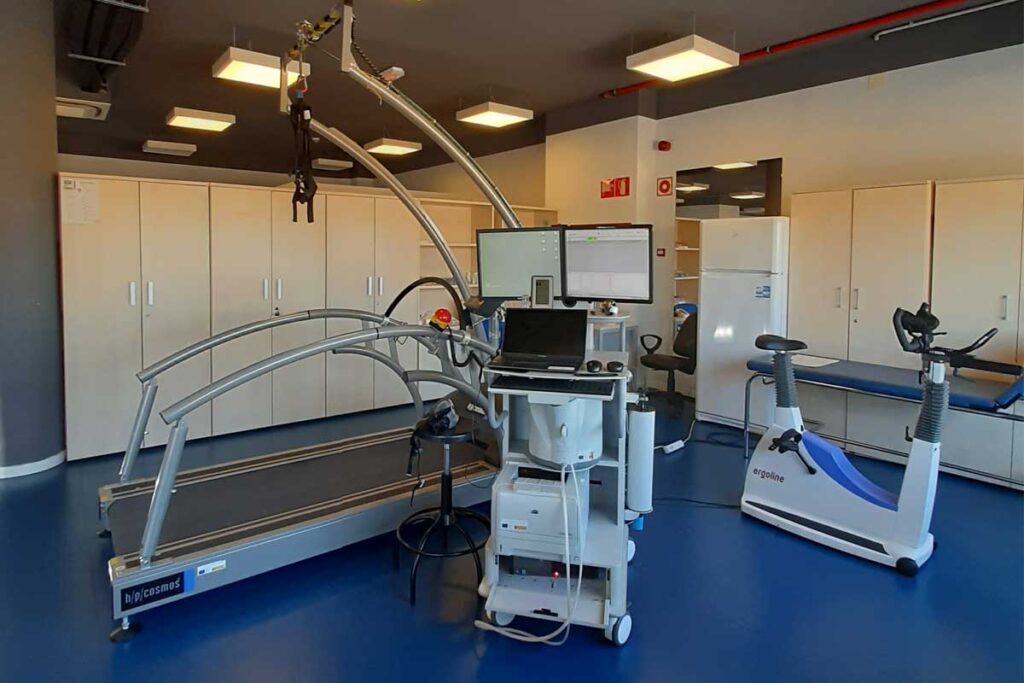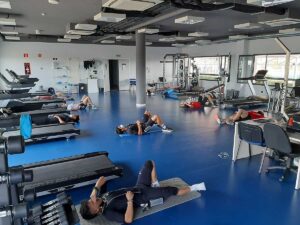Strength levels and cardiovascular fitness are the two most important variables that determine a person’s physical condition.
Physical fitness is considered a powerful marker of current and future health (1, 2). In fact, it has been shown that muscle strength is inversely associated with the risk of all-cause mortality regardless of other potential factors (3).
Several studies have shown that physical exercise is effective not only when it comes to preventing and treating obesity, but also improving cardiovascular fitness and muscle strength (4).
Muscle strength can be calculated through field tests considered to be the gold standard, such as knee extension using an isokinetic machine; this can be measured with new methodologies and technologies such as linear encoders that take into account the speed of execution for the calculation of maximum strength. And it can also be measured in the traditional way by various maximal repetition tests. In our case, we have used the latter strategy due to its high feasibility in the laboratory.
The objective of this intervention (with a training program that we have detailed in previous posts) was to lower body fat, but we also measured the two essential variables that determine physical fitness: maximal strength and cardiovascular fitness.
Initial assessment
These measurements were always carried out under the supervision of a specialized team and with the rigor of the scientific method. We conducted an initial assessment of:
- Expression of force: A battery of tests was run to determine the expression of strength in pushing and pulling exercises of the upper and lower body, as well as core strength exercises.
- Submaximal and maximal stress testing: To determine the maximal oxygen consumption (Vo2Max), a maximal treadmill exercise test was performed in which the speed was increased every minute up to the maximum tolerable speed without running, and then the incline was increased. In this type of test, we try to push the participant to give their maximum effort to find out their maximal oxygen consumption.
Training plan
The training plan consisted of 3 days of exercise per week for 6 weeks combined with whole-body electrostimulation. The plan followed a concurrent model, and a periodization of the electrical parameters specific to Wiemspro.

Improvements achieved
We will now discuss the improvements achieved in the study.
Muscle strength
Both pulling and pushing exercises were used for muscle strength measurements. For pulling exercises, we used deadlift; and for pushing exercises, we use the bench press and the squat.
Finally, for core stability and strength, we used two resistance tests (abdominal plank and lumbar extension). The results found can be seen in Image 1.

As you can see, the participant obtained a significant improvement in all the exercises performed. It is worth noting that the biggest improvement was in the core stabilization exercises due to the reduction and transformation of body composition, which you may see here.
The lower the weight, the greater the probability of holding the isometric contraction required for this exercise for a longer period of time.
- In the PRE of the lumbar extension exercise (hands behind the back and a totally straight back without any degree of torso flexion), the participant held a total of 0:51 seconds; and in the POST he managed to reach a time of 1:56. The increase in this case was 127%.
- On the other hand, in the abdominal plank, the increase in time was similar, going from holding 1:06 seconds at the beginning, and obtaining a final time of 2:15 seconds with an increase of 130%.
- In the deadlift exercise, he obtained a significant improvement of 28% in the weight of the 1RM from 122.6 kg in the PRE to 157.5 kg in the POST. The traction force of the lower body improved in quantity.
Both the deadlift and the squat are exercises in which the hamstring and quadriceps are predominant respectively, however, we cannot ignore the work done by all the stabilizing muscle groups.
- As for the squat, the improvement was not as significant because he lifted a weight of 119.9 kg in the PRE, and a weight of 133.5 kg in the POST, with an increase of 11%. At this point, and knowing that we are dealing with a person weighing 100 kg, 133 kg might not seem like a lot for the squat. However, all exercises were performed on the same day. In the case of the squat, it was the last exercise to be performed, so the central nervous system was completely exhausted, which could have been a limiting factor in this execution. Nevertheless, improvements in all exercises were evident.
- Finally, upper body strength was measured through the bench press. In the PRE, he lifted a weight of 109 kg, and in the POST, 125.3 kg with an approximate improvement of 15%.
Cardiovascular fitness
Cardiovascular fitness did not undergo a significant change. This is mainly due to two factors:
- The training was not been oriented to the improvement of this physical condition parameter.
- The participant we are talking about started with very good cardiovascular fitness values, so it is not easy to improve these levels when they are already excellent.
In image number two we can see which scale he was on within his age range.

To be exact, in the PRE, the maximal oxygen consumption was 47.1 mL/kg/min, while in the POST, it reached 48.8 mL/kg/min.
As we can see in the image above, both cases indicate excellent cardiovascular fitness.
Conclusion
Whole-body electrostimulation appears to help improve muscle strength levels, but not fitness levels.
The improvements analyzed are not electro-dependent, i.e., these improvements were not caused by WB-EMS alone, but rather the exercise caused a large part of these changes.
As we have mentioned in previous posts, the objective of this study was to reduce fat %, however, we have seen that parameters such as muscle strength obtained great results after the application of WB-EMS training.
It will be interesting to analyze the proper effect of WB-EMS on the expression of strength, and to know which are the best electrical parameters for the improvement of strength and cardiovascular fitness.
Unai Adrian Perez de Arrilucea
Wiems Lab Team







